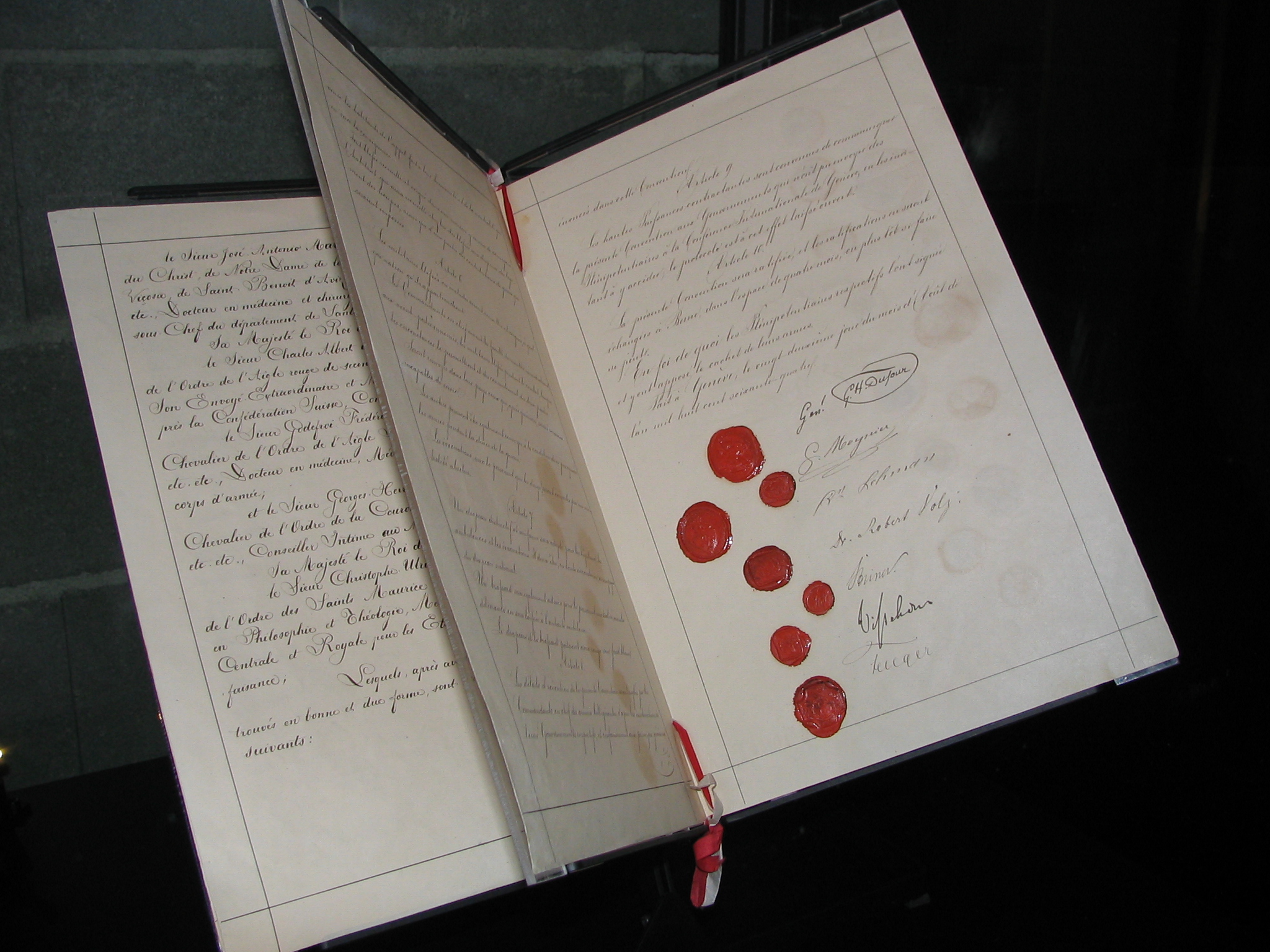
The Geneva Conventions: A Primer

The Geneva Conventions are the most significant, binding agreements on international humanitarian law, setting standards for the treatment of wartime prisoners and civilians. The Conventions have evolved over the last century, as countries have created and adapted standards for the treatment to soldiers in time of war and for the protection of civilians and aid workers. When the “Geneva Conventions” are discussed today, people usually mean the four Geneva Conventions of 1949, which replaced the older Geneva Conventions of the 1860s. In this post, we will review the Conventions from their beginnings in the 19th century.
The Geneva Conventions started with Henry Dunant, a Swiss businessman. Dunant experienced the worst of the “horrors of war” when he visited a battlefield during a conflict between Austrian and Franco-Sardinian forces in Northern Italy in 1859. At the time, it was typical for armies to abandon their wounded on the field of battle. His experience would lead him to formthe International Red Cross and advocate for the first Geneva Convention of 1864. It would ultimately earn him the first Nobel Prize for Peace.
The Geneva Convention of 1864 was the first international agreement for the protection and rights of foreign nationals. This first convention had ten articles and would set an obligation to care for enemy soldiers, including the treatment of the sick and wounded and respect and protection of medical personnel, equipment, and transports, identifying them with the red cross on a white background that we’re all familiar with today. Fun Fact: This Convention was in effect for for 98 years, until the last signatory, the Republic of Korea, adopted the 1949 Conventions.
The Second Geneva Convention would ultimately revise and replace the 1864 Convention. It was generated from suggestions from the International Committee of the Red Cross and guidance from The Hague Peace Conference of 1899. The Hague Conference had expressed a desire to see the 1864 Convention revised. The new convention would have 52 State Parties and 33 articles that added clarity and precision to the existing convention. It added measures about the burial of the dead, notification of fatalities, and recognition of aid societies.
The Geneva Conventions of 1929
There are two Geneva Conventions of 1929. The first is the Convention Relative to the Treatment of Prisoners of War. This Convention was convened specifically to address failings in The Hague Conventions of 1899 and 1907 that were revealed during the course of World War I. At the time, these deficits were met by special agreements between the aggrieved parties, but the war highlighted the need for increased precision. This Convention was intended to supplement, not replace, the Hague Conventions.
The Second Geneva Convention of 1929 is the third revision to the Geneva Convention of 1864, the Convention for the Amelioration of the Condition of the Wounded and Sick in Armies in the Field. The updates included the recognition and protection of medical aircraft and the adoption of the Red Crescent and the Red Lion and Sun in those countries which did not use the Red Cross. It also removed some articles that dealt specifically with prisoners of war and moved them to the First Geneva Convention of 1929.
The Geneva Conventions of 1949
The fourth and current Geneva Conventions are a set of four conventions that replaced the two Geneva Conventions of 1929 and the Hague Convention of 1907 for the Adaptation of Maritime Warfare of the Principles of the Geneva Convention. The 1929 Conventions were amended after World War II clearly illustrated the failings of any wartime conduct enforcement that failed to address conduct towards civilians. It further outlines the responsibilities that any occupying power has to the treatment of peoples in occupied land. The Third Article of the fourth Convention, the Convention Relative to the Protection of Civilian Persons in Time of War, outlines situations of, “armed conflict not of an international character,” prohibiting the targeting of noncombatants on the basis of race, color, religion or sex.
The Geneva Conventions of 1949 entered into force on 21 October 1950. The Conventions were ratified by 74 countries by the end of the 1950s. There are currently 194 States Parties to the Conventions. The Conventions are comprised of 159 articles. Three additional protocols were added in 1977 (Protocols I & II) and in 2005 (Protocol III). Today, the Conventions are the foundational international agreements governing the treatment and conduct of military with regards to enemy combatants and civilians.
The Four Geneva Conventions of 1949 are:
- The Convention for the Amelioration of the Wounded and Sick in Armed Forces in the Field (64 Articles)
- The Convention for the Amelioration of the Condition of the Wounded, Sick and Shipwrecked Members of Armed Forces at Sea (63 Articles)
- The Convention Relative to the Treatment of Prisoners of War (143 Articles)
- The Convention Relative to the Protection of Civilian Persons in Time of War (159 Articles)
The Conventions remain a powerful example of a shared international commitment to humane treatment of soldiers, prisoners, and civilians at times of peace and war. Are you representing a UN Member State at AMUN this year? Do you have anything you’d like to add about the Geneva Conventions? Let us know on our facebook page.
Keep Up With The Accords
More to read
The AMUN Accords is a premier resource for fact-based Model United Nations simulations. We are always looking for new contributors. Want to write for the AMUN Accords? Check out out the submission guidelines and then get in touch!




